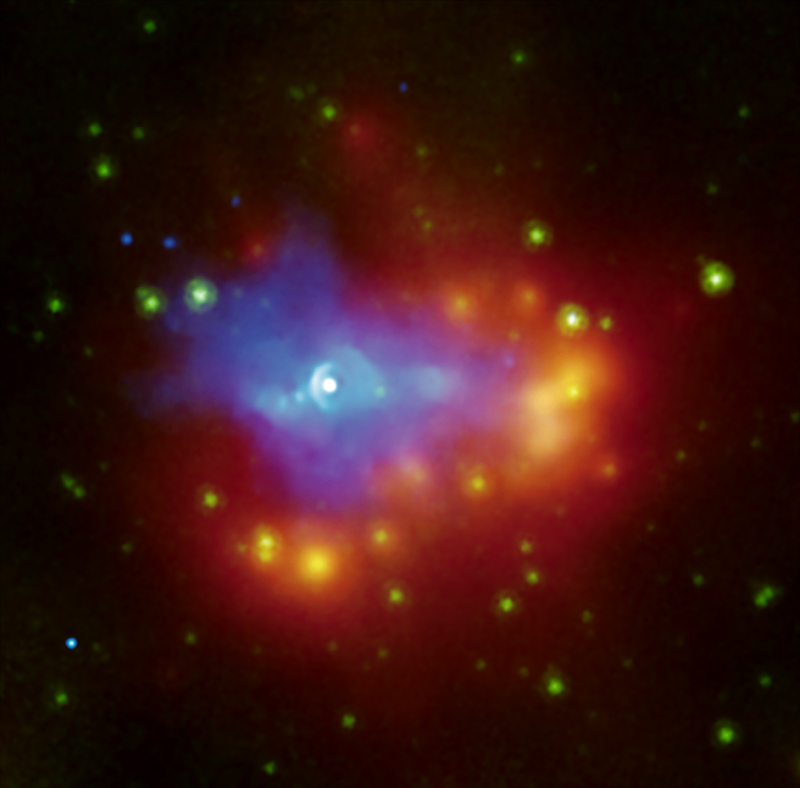
 Credit: X-ray (Blue), Infrared 24 micron (Red-Yellow), Infrared 8 micron (Green)
Credit: X-ray (Blue), Infrared 24 micron (Red-Yellow), Infrared 8 micron (Green)
Dust In and Around the Wind
Supernova explosions drive the chemical evolution of galaxies. Complex elements like oxygen, nitrogen, carbon, silicon and iron are cooked up in the interiors of dying stars, and supernovae distribute them into space. The supernova explosion itself can even transmute simple atoms into more complex ones. These complex elements can eventually join together to form molecules and solid dust particles, which can come together to form pebbles, rocks and perhaps eventually even rocky planets like earth. Understanding the details of how this process happens is an important step in understanding how planets form in the Universe. The image above shows the interesting results of the interaction showing how a supernova explosion interacts with its Galactic environment. This object goes by the prosaic name G54.1+0.3, and is an example of a pulsar wind nebula, a stream of energetic, X-ray emitting particles produced by the spinning neutron star (a pulsar) left behind when the star exploded. X-ray emission from the pulsar wind nebula is shown in blue in the image above, from the Chandra X-ray Observatory. A larger, cooler cloud of gas and dust surrounds the pulsar, as detailed in Infrared images by the Spitzer Space Telecopes, shown in red, green and yellow. Point-like sources embedded within the larger dust cloud may be young stars formed after the dust cloud was compressed by the supernova explosion. More recent studies, though, suggest that these sources are actually clouds of hot enriched dust produced by the supernova, with enough dust to make nearly 10,000 earths.
Published: October 18, 2021
<
HEA Dictionary ● Archive
● Search HEAPOW
● Other Languages
● HEAPOW on Facebook
● Download all Images
● Education ● HEAD
>

Each week the HEASARC
brings you new, exciting and beautiful images from X-ray and Gamma ray
astronomy. Check back each week and be sure to check out the HEAPOW archive!
Page Author: Dr. Michael F. Corcoran
Last modified Monday, 26-Feb-2024 17:45:34 EST


